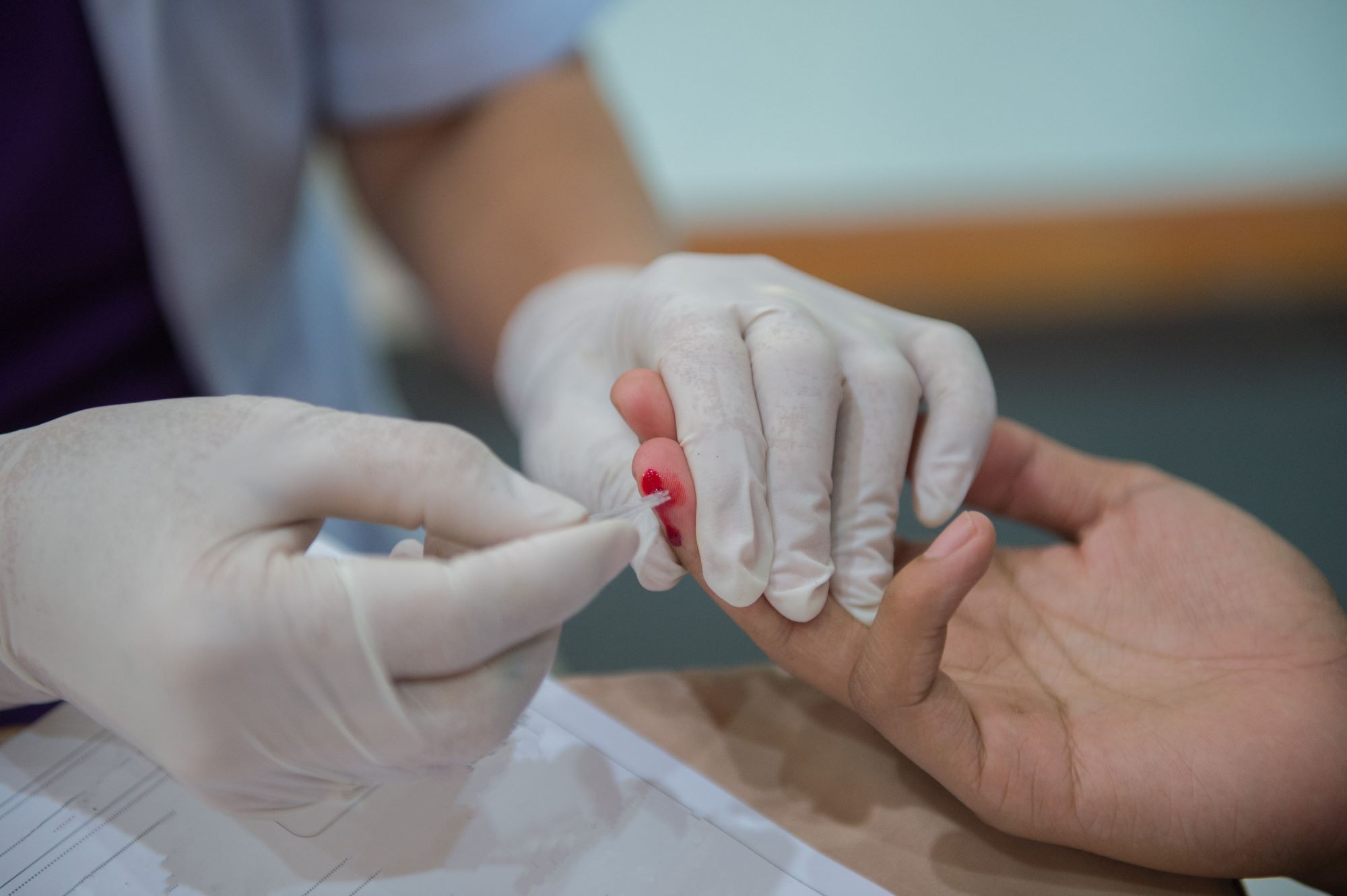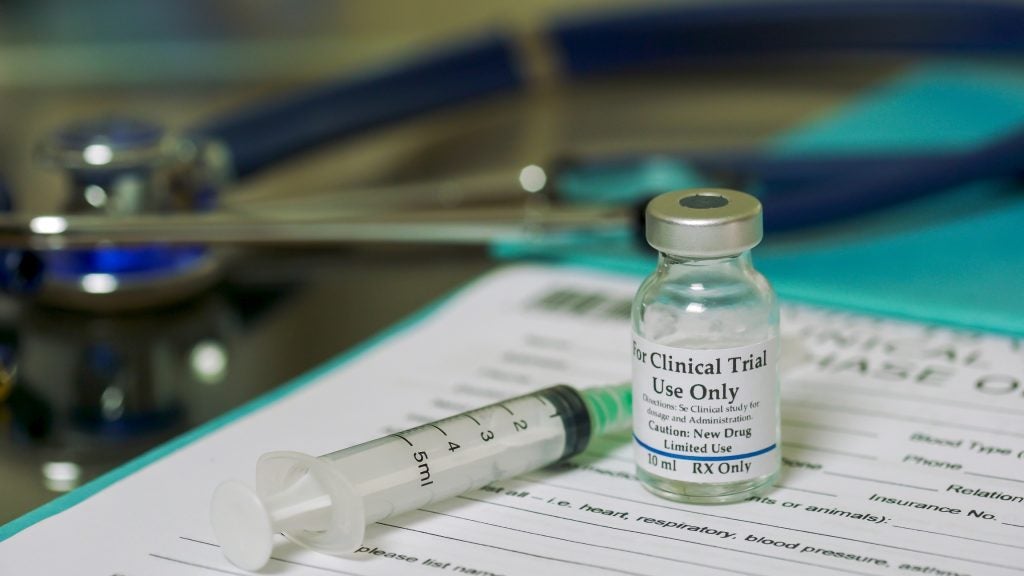
According to the International AIDS Vaccine Initiative (IAVI), there were 38 million people living with HIV/AIDS in 2020, with 1.5 million contracting the virus that year. 27% of people living with the virus don’t have access to treatment, representing a tremendous unmet need and a huge transmission risk.
The search for an HIV vaccine began soon after scientists isolated the virus and confirmed that it caused AIDS in 1984. The scientific community assumed that developing a vaccine for the virus would be fairly simple and would be achieved within a few years, but that was almost 40 years ago and still, no pharma company or research team has come anywhere close to finding one.
HIV has proven to be a tough enemy to defeat due to its ever-changing and evolving structure. Despite no longer being a death sentence thanks to life-saving antiretroviral treatments that dramatically reduce viral load, a vaccine for the highly stigmatised disease is considered the ‘holy grail’ in stopping HIV, but a true prophylactic agent has remained elusive.
In the last few decades, science has made great strides in understanding the virus’s complex structure.
As José Esparza, a virologist who began working with the World Health Organization in the 1980s to tackle the AIDS epidemic outlines in his 2013 account of the quest for an HIV vaccine: “Three successive scientific paradigms have been explored: induction of neutralizing antibodies, induction of cell-mediated immunity, and exploration of combination approaches and novel concepts.”
How well do you really know your competitors?
Access the most comprehensive Company Profiles on the market, powered by GlobalData. Save hours of research. Gain competitive edge.

Thank you!
Your download email will arrive shortly
Not ready to buy yet? Download a free sample
We are confident about the unique quality of our Company Profiles. However, we want you to make the most beneficial decision for your business, so we offer a free sample that you can download by submitting the below form
By GlobalDataThese paradigms laid the groundwork for new promising waves of research. There are currently over 20 HIV vaccine trials ongoing around the world. While J&J’s recent efforts may have failed, Moderna is set to start trials of its HIV vaccine based on mRNA technology- the same science that has recently bought highly effective jabs to market for the Covid-19 pandemic.
Here, Clinical Trials Arena charts the breakthroughs and failures of HIV vaccine development of the last three decades and profiles the new hopes of recent years.
Establishing immune response
The first wave of HIV vaccine research leant on a well-established idea that has helped develop vaccines for previous global threats and the one we are currently living through – Covid-19. This scientific paradigm focuses on stimulating the immune system to produce neutralising antibodies capable of inactivating certain viruses.
World leaders thought this technique would be a dead cert. In 1984 the US Secretary of Health and Human Services, Margaret Heckler, declared that “a vaccine [will be] ready for testing in approximately two years”. But nobody was aware that HIV/AIDS was infinitely more elusive than other viruses.
As Esparza writes: “New recombinant DNA technologies were booming during the mid-1980s, and these technologies were seen as the most practical approach to develop a safe and effective HIV vaccine.”
With a precedent set by a new recombinant hepatitis B vaccine licensed in 1986, the HIV scientific community set out to develop a subunit vaccine based on genetically engineered antigens representing the outer envelope glycoproteins of HIV.
In 1987, the first HIV vaccine clinical trial to be conducted in the US opened at the National Institutes of Health (NIH) Clinical Center in Bethesda, Maryland. The Phase I trial enrolled 138 healthy, HIV-negative volunteers. The gp160 subunit vaccine showed no serious adverse effects but no neutralising antibodies were generated.
Between 1988 and 2003, at least 35 Phase I trials were conducted with different envelope proteins.
Generally, the results showed that the native glycosylated molecules produced in mammalian cells were safe and immunogenic, inducing binding and neutralizing antibodies. These vaccines also primed CD4+ cells but were largely ineffective in inducing CD8+ cytotoxic T lymphocyte (CTL) responses.
Over these years scientists discovered a huge challenge. Antibodies target specific proteins on a virus’s surface but HIV rapidly mutates during viral replication. The problem with HIV, scientists found, is that the viral envelope glyoprotein which is the main target of neutralising antibodies is tremendously genetically diverse. The virus continuously outruns the immune system.
In one study in which researchers repeatedly conducted blood draws in people infected with HIV, they found that antibodies generated by their immune system remained up to six months behind the virus.
Targeting T cells
At the dawn of the new millennium, researchers began a second surge of HIV vaccine projects, this time targeting T cells rather than trying to stimulate antibodies against the rapidly mutating virus. This was on the heels of the realisation of the crucial significance of CD8+ T-cell responses in the control of HIV infection.
While also being capable of producing antibodies, T-cells are dubbed ‘killer’ cells for their seek-and-destroy role against infected cells. The hope was that a T-cell vaccine would stimulate cells that recognise internal proteins in the virus.
This paradigm drove the development of live recombinant viral vectors, particularly pox and adenovirus vectors, and DNA vaccines.
STEP, a double-blind, randomized Phase II trial evaluating a cell-mediated immunity vaccine based on an adenovirus type 5 (Ad5) vector expressing HIV-1 abruptly ended this wave of research in 2007 when it was found that this approach not only failed to provide protection, but also devastatingly appeared to increase the risk of HIV infection. Notably, it was because of this trial that the Gamalaya Institute of Russia recently drew criticism from the scientific community for its Ad5 Covid-19 vaccine, Sputnik V , as researchers feared it could also increase the risk of Covid infection.
The disappointing outcome of the STEP trial contrasted with the surprisingly positive results of the RV144 Phase III trial (widely known as ‘the Thai trial’ or ‘prime-boost’) announced two years later, in October 2009.
A collaboration between the US and Royal Thai governments, the RV144 trial tested the protective efficacy of a ‘prime-boost’ combination of two vaccines: ALVAC (the vCP1521 canarypox vector manufactured by Sanofi Pasteur) and AIDSVAX B/E vaccine (the Genentech gp120 proteins previously tested in VAX003 and VAXX04, supplied by GSID).
The trial enrolled 16,402 adults in Thailand, from September 2003 to August 2009.
After decades of human trials, RV144 was the only candidate to demonstrate any measure of real-world effectiveness with 31.2% efficacy in preventing HIV infection. This remains the closest researchers have ever gotten to developing a vaccine against HIV, but 31% was still far off the numbers needed to gain regulatory approval.
“To some extent, the modest success obtained with the RV144 trial brought new attention to the importance of conducting clinical trials, especially efficacy trials, to complement the basic research effort,” writes Esparza.
“The RV144 trial also provided information suggesting that antibodies were important in conferring protection against acquisition of HIV infection. This, taken together with the failure of the CMI vaccine tested in the STEP trial, turned the HIV vaccine paradigm pendulum back to the induction of antibodies. This ultimately may be needed to confer sterilizing protection in vaccinated individuals, or at least to prevent the establishment of chronic infection.”
Stimulating B-cell responses
The third and current paradigm of HIV research is based on stimulating B cells of the immune system to generate broadly neutralising antibodies (bnAbs) against the virus.
“The holy grail of HIV vaccine research has been the development of immunogens capable of eliciting bnAbs that can protect against the many mutant strains that circulate globally,” wrote Esparza, “an approach that has been championed for many years by the IAVI Neutralizing Antibody Consortium under the leadership of Dennis Burton, from the Scripps Research Institute in La Jolla, and IAVI’s Wayne Koff.”
In 2009 previously undescribed potent bnAbs from large groups of HIV-infected individuals were first identified. It was the isolation of these antibodies that represented renewed hope in HIV vaccine development after decades of failure.
By examining how these antibodies interact with the virus and neutralise it in lab tests, scientists were able to identify numerous points of vulnerability on the HIV virus, which they used to design vaccine immunogens.
The first of these engineered immunogens is eOD-GT8 60mer, developed by IAVI and partners.
Other progress that ignited interest in the design of immunogens to induce bnAbs was the gaining of a clearer understanding of the HIV envelope glycoprotein – the target of all bnAbs.
“For decades scientists were hindered by their inability to capture the precise structure of this notoriously unstable trimeric protein,” IAVI has noted. “But recent advances have allowed them to both stabilize and understand HIV envelope in unprecedented detail.”
In a Phase I trial scientists are testing whether eOD-GT8 60mer would stimulate the human immune system to initiate the generation of a class of bnAbs called VRC01. In earlier mouse studies, the nanoparticle could activate these cells and get them to multiply and mutate toward producing VRC01-like antibodies.
In February 2021, IAVI and Scripps Research announced that the vaccine showed success in stimulating the production of B cells needed to start the process of generating bnAbs against the virus; the targeted response was detected in 97% of participants who received the vaccine.
“This study demonstrates proof of principle for a new vaccine concept for HIV, a concept that could be applied to other pathogens, as well,” said Dr William Schief, a professor and immunologist at Scripps Research and executive director of vaccine design at IAVI’s Neutralizing Antibody Center, whose laboratory developed the vaccine. “With our many collaborators on the study team, we showed that vaccines can be designed to stimulate rare immune cells with specific properties, and this targeted stimulation can be very efficient in humans. We believe this approach will be key to making an HIV vaccine and possibly important for making vaccines against other pathogens.”
The study sets the stage for additional clinical trials that will look to refine and extend the approach with the long-term goal of creating a safe and effective HIV vaccine.
Now, IAVI and Scripps Research are partnering with Moderna to explore how to deliver the eOD-GT8 60mer immunogen with the firm’s mRNA technology and investigate how to use mRNA to direct cells to make B-cell proteins that will elicit immune responses against HIV.
A fresh wave of trials
Last month, Moderna announced it was set to start human trials of the candidate mRNA-1644 in partnership with IAVI and Scripps Research. The firm is looking to enrol 56 healthy adults without HIV by the end of September to test the safety of the vaccine and basic immune response.
The candidate is based on the same mRNA platform as Moderna’s hugely successful Covid-19 jab – one of the two mRNA vaccines to be authorised anywhere in the world.
“Even as we have shown that our mRNA-based vaccine can prevent Covid-19, this has encouraged us to pursue more-ambitious development programs within our prophylactic vaccines modality,” said Moderna CEO Stéphane Bancel in a January 2021 update about the firm’s vaccine programmes.
mRNA-1644 will be the first HIV mRNA vaccine to be trialled in humans. Moderna will also be trialling another version of the candidate called mRNA-1644v2-Core. Both have been tested for safety in non-human subjects.
New hope for marginalised groups
Esparza has argued that pharma has been holding back on investment in HIV trials until researchers had a better grasp on the basic science – like finally understanding the virus’s envelope.
Aside from the significant scientific hurdles, HIV vaccine research and development has been hampered by a lack of political urgency, largely due to the fact that the virus is highly stigmatised and disproportionally affects marginalised groups.
“If society really valued an HIV vaccine, we would have done several efficacy trials in parallel, as was done with Covid,” Esparza told National Geographic earlier this year. “Expensive, yes. But the cost of the HIV epidemic has been enormous.”
According to IAVI, $29bn is needed for the global HIV/AIDS response by 2025 while a study from The Lancet totalled the cost of HIV/AIDS health spending to be more than $562bn across 188 countries from 2000 to 2015.
The Moderna mRNA HIV vaccine trial represents new hope for stopping the spread of the incurable virus right as Johnson & Johnson’s (J&J) candidate failed its Phase IIb efficacy trial, named Imbokodo, in women in southern Africa.
A second J&J study called Mosaico, testing a different composition of the HIV vaccine regimen among men who have sex with men and transgender individuals in the Americas and Europe, will continue.








